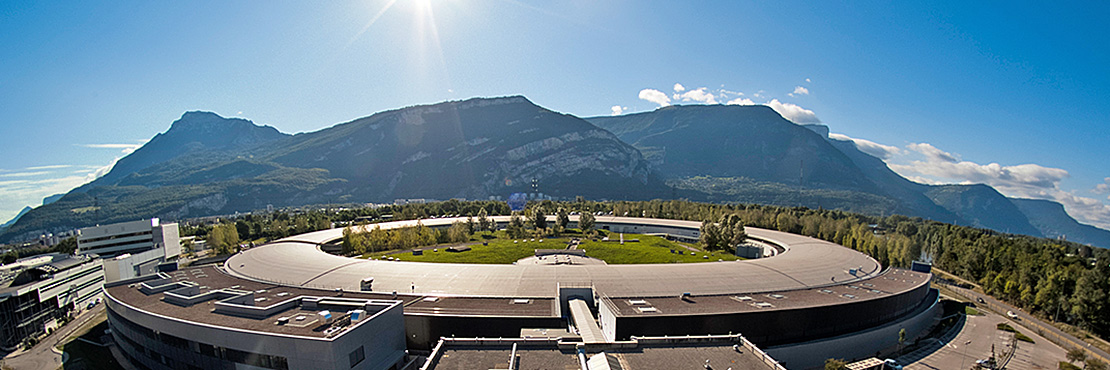
On August 2020, the ESRF opened its completely rebuilt x-ray source, ESRF-EBS (Extremely Brilliant Source), the world’s first fourth-generation high-energy synchrotron. ESRF-EBS opens new vistas for X-ray science in imaging condensed and living matter from metre to nanometre scales, enabling scientists at a large to address the global challenges facing our society such as health, climate change and environment, but also energy and innovative industry.
What is the ESRF? How does a synchrotron work? Discover the European Synchrotron with this video. All the videos of the ESRF are available on the YouTube channel Light for science.
The ESRF - The European Synchrotron Radiation Facility - is the most intense source of synchrotron-generated light, producing X-rays 100 billion times brighter than the X-rays used in hospitals. These X-rays, endowed with exceptional properties, are produced at the ESRF by the high energy electrons that race around the storage ring, a circular tunnel measuring 844 metres in circumference.
Each year, more than 9000 scientists from around the world come to Grenoble, to “beamlines”, each equipped with state-of-the-art instrumentation, operating 24 hours a day, seven days a week.
Thanks to the brilliance and quality of its X-rays, the ESRF functions like a "super-microscope" which "films" the position and motion of atoms in condensed and living matter, and reveals the structure of matter in all its beauty and complexity. It provides unrivalled opportunities for scientists in the exploration of materials and living matter in many fields: chemistry, material physics, archaeology and cultural heritage, structural biology and medical applications, environmental sciences, information science and nanotechnologies.
From making history in 1988 as the world's first third-generation synchrotron, to launching the first of a new generation of high-energy light source in 2020, the force of the ESRF is its capacity to innovate, pushing technology to its limits and seeking ever-higher performances in order to provide scientists with state-of-the-art instruments. ESRF-Extremely Brilliant Source (EBS) improves X-ray performances of brilliance and coherence by a factor of 100 compared to the previous source. Based on an award-winning lattice design, ESRF-EBS paves the way for a new standard of synchrotrons around the world.
Academic Europe, the European career network for Academics, Researchers and Scientists